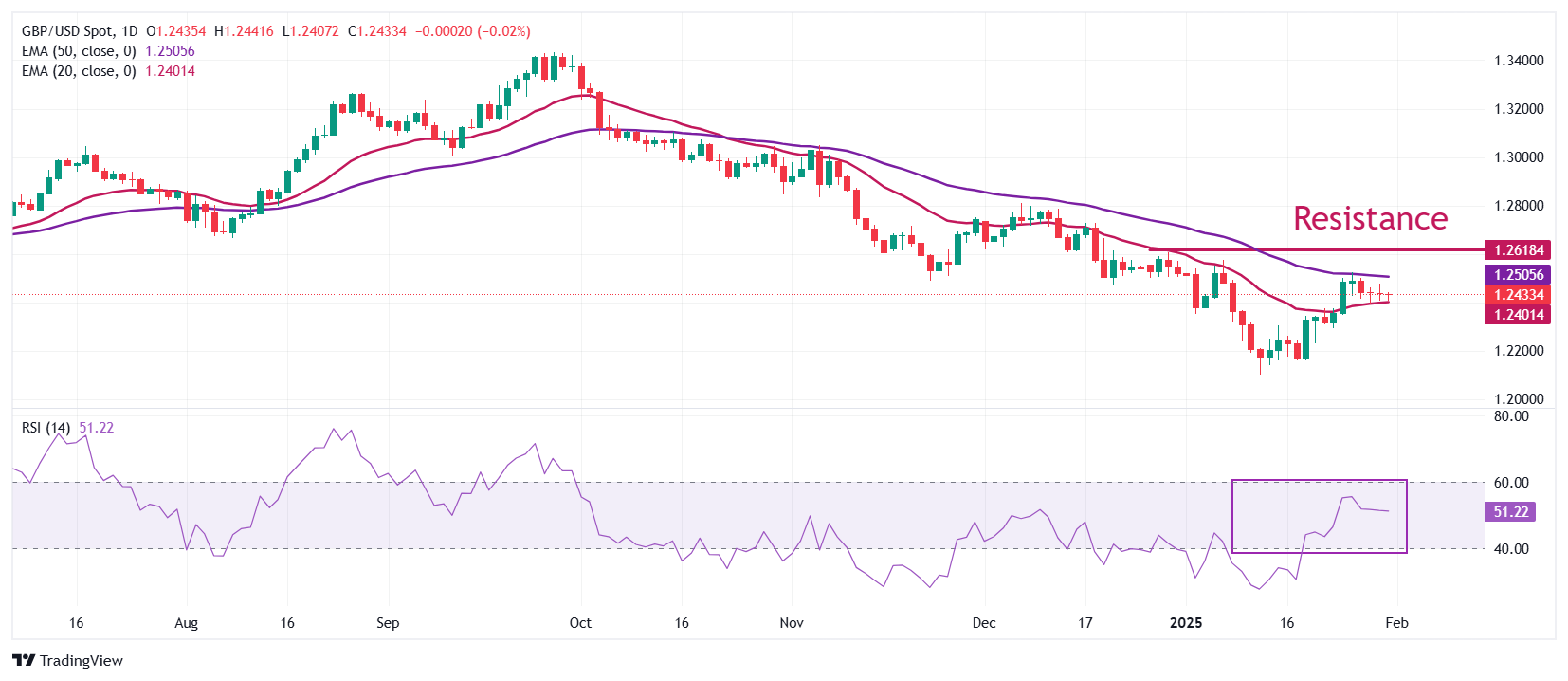The Pound Sterling (GBP) remains in a tight trading range above the key support level of 1.2400 against the US Dollar (USD) during Friday’s European session. Despite heightened safe-haven demand for the USD, the GBP/USD pair has shown resilience, maintaining stability amid ongoing geopolitical and economic tensions.
Trump’s Tariff Threats Fuel USD Strength
The US Dollar Index (DXY), which measures the Greenback’s value against six major currencies, hovers near its weekly high of 108.20. The recent surge in USD demand follows former US President Donald Trump’s announcement on TruthSocial, where he reiterated plans to impose a 25% tariff on Canada and Mexico and a staggering 100% tariff on BRICS nations if they attempt to replace the US Dollar in international trade.
Trump stated, “We are going to require a commitment from these seemingly hostile countries that they will neither create a new BRICS currency nor back any other currency to replace the mighty US Dollar, or they will face 100% tariffs.” He reinforced that any attempts to undermine the USD’s dominance would lead to severe economic consequences for the involved nations.
Impact on Federal Reserve Policy
The possibility of increased tariffs has led market participants to speculate that inflationary pressures in the US could persist, potentially delaying interest rate cuts by the Federal Reserve (Fed). On Wednesday, the Fed decided to keep interest rates unchanged at 4.25%-4.50%, with Chair Jerome Powell emphasizing that any monetary policy adjustments would depend on further inflation data and labor market conditions.
Investors are now eyeing the US Personal Consumption Expenditures (PCE) Price Index report, set for release at 13:30 GMT. The core PCE inflation, the Fed’s preferred inflation measure, is expected to rise 0.2% month-on-month, up from 0.1% in November, with annual growth steady at 2.8%.
Pound Sterling Under Pressure Ahead of BoE Decision
The Pound Sterling remains under pressure as traders focus on the Bank of England’s (BoE) upcoming monetary policy decision next Thursday. Market expectations suggest that the BoE may initiate a policy-easing cycle, with a potential 25 basis point (bps) rate cut to 4.5%.
Recent UK inflation indicators have softened, but rising wage growth remains a concern. Additionally, increased employer contributions to National Insurance (NI) have raised concerns about business confidence. To counter this, UK Chancellor Rachel Reeves has proposed growth-boosting measures, including Heathrow Airport’s expansion and deregulation to improve productivity.

Technically, GBP/USD has maintained its position above the critical 1.2400 level, supported by the 20-day Exponential Moving Average (EMA). However, resistance remains at the 50-day EMA near 1.2510.
The 14-day Relative Strength Index (RSI) indicates a sideways trend, oscillating between 20.00-40.00. Key downside levels include the January 13 low of 1.2100 and the October 2023 low of 1.2050, while the December 30 high of 1.2607 serves as an upside resistance target.
Also Read: GBP/USD Soars Toward 1.2800 as Fed Rate Cut Bets Fuel Pound Sterling’s Strength
With geopolitical tensions, trade policies, and central bank decisions driving market sentiment, GBP/USD traders remain cautious. The Fed’s inflation stance and the BoE’s policy direction will be critical in shaping the pair’s trajectory in the coming weeks.
Disclaimer: The information in this article is for general purposes only and does not constitute financial advice. The author’s views are personal and may not reflect the views of FXRift.com . Before making any investment decisions, you should always conduct your own research. FX RIFT is not responsible for any financial losses.



